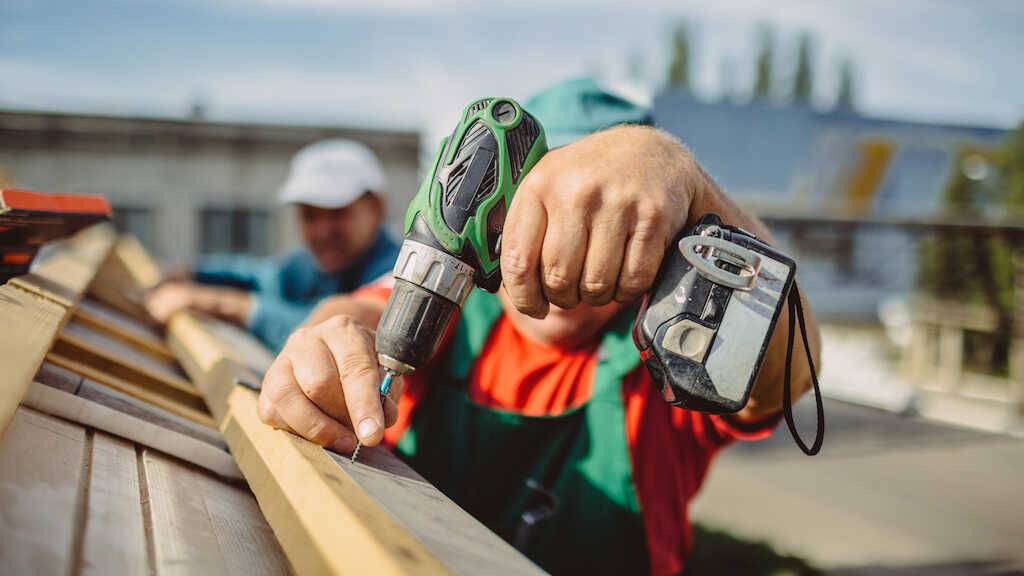The roof is one of the most important—yet overlooked—features of a property. Your property’s roof plays an important role in terms of protection, energy efficiency, and aesthetics.
A good-quality roof can protect against the elements. Leaks can cause major damage to the interior of a property, which results in restoration and replacement costs in addition to roof repair. Roofs also help to protect indoor air quality and can increase the value of a property.
Whether you are overseeing a new house build or looking to upgrade your property with a new roof, there are a number of important questions to consider. Chief among these is ‘How long does a roof last?’ This will help to determine the type of roofing materials you should choose and understand when a roof should be replaced.
in this blog post, we will look at the average lifespan of a roof and signs that you should replace your property’s roof.
How Long Does a Roof Last?
The lifespan of a roof depends on a number of key factors. These include:
- The type of materials used
- The quality of the installation workmanship
- Environmental conditions
On average, a roof will last approximately 30 years, though this can vary greatly depending on the above factors. Here, we will look at the average lifespan of five common types of roofing material: asphalt shingles, slate tile, metal, clay tiles, and wooden shingles.
Asphalt Shingle
Asphalt shingles are the most popular type of roofing material in the United States. They are a durable, affordable, and aesthetic option. They are made of fiberglass and asphalt sealant and provide excellent protection from a range of weather elements, including rain, wind, snow, and UV rays.
Asphalt shingles will last for between 15 and 30 years, depending on the specific type of material used and environmental conditions. Three-tab shingles are the most affordable option, while premium shingles come with the highest price (and longest lifespan).
Slate Tile
If you are looking for a roofing material with the longest lifespan, slate tile is your best option. Depending on the type of slate, the expected lifespan ranges from 75 to 200 years.
Slate tiles hold up to all kinds of weather conditions and require very little maintenance as it retains very little moisture (meaning it is mold-resistant). Slate is also fire-resistant and an excellent choice for homeowners who are conscious of their property’s aesthetic appeal.
Metal
Metal roofs also feature a long lifespan, typically between 40 and 70 years though premium metal such as copper can last for more than 100 years. Common types of metal roofs include:
- Ribbed metal panels – 25 to 50 years
- Stand seam metal roofing – 50 years
- Stone-coasted steel tiles – 30 to 50 years
Metal roofing is highly durable and is easy to maintain with little maintenance required.
Clay Tile
Clay tiles are also one of the most visually impressive types of roof and help to boost a property’s curb appeal. They are another durable option and have lifespans of between 50 and 100 years.
This type of roof does require regular cleaning to keep mold, moss, and algae at bay. Clay tiles are best suited to warmer climates and can become damaged in colder climates. Sealing clay tiles can help to reduce the impact of colder weather.
Wooden Shingle
Wood shakes and shingles are another option for roofs and have an average lifespan of approximately 30 years. Cedar shakes are a long-lasting option here given that it is insect- and rot-resistant, as well as being able to withstand winds at high speeds (great if you live near the coast).
Wooden roofs do require regular uptake, which includes yearly cleanings and staining or repainting every 5 years.
Signs That Your Roof Needs Replacing
As the above information shows, roofs do not last forever and should be replaced when at the end of their lifespan or have sustained damage.
One sign that your roof needs replacing is if you notice water damage within your house. You may start noticing damp patches in the upper part of your property. Signs of mildew and watermarks often point to a roof that is damaged and should be replaced.
Missing or broken shingles or tiles is another sign that your roof may need to be replaced. When shingles or tiles are missing, your property will be more susceptible to pest infestation and less energy-efficient. It also risks water damage as noted above.
Another warning is if you notice that your roof is sagging. Your roof should follow a straight line. If your roof is sagging in the middle, which may be caused by faulty roofing materials or exposure to moisture, you should speak to a professional roofing company without delay.
The final sign that your roof needs replacing is the above-listed lifespans. If you have purchased a property, it is important to know the current lifespan of the roof and the materials used.
Understanding the Average Lifespan of Roofs
A new roof can be a large project for homeowners, though the benefits are many. The average lifespan of a roof depends on a range of different factors, including the type of material used. The above information on how long does a roof last will help you to make an educated decision when it is time for a new roof on your property.
For the best roofing contractor near Effingham, Illinois, your No. One option is Mid-State Construction & Roofing, Inc. We install a large variety of high-quality roofing systems for both residential and commercial properties. Contact our team today to learn more about our services and get a free 25-point inspection for your property’s roof.

